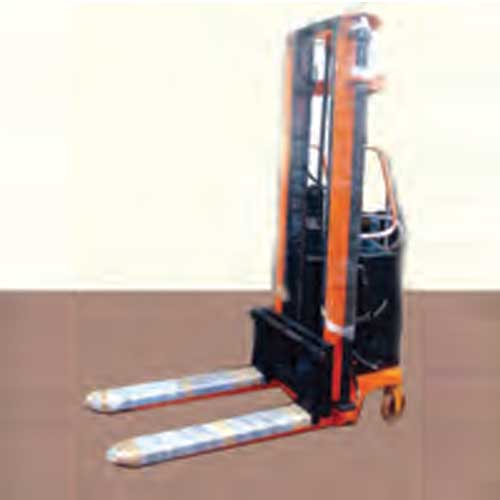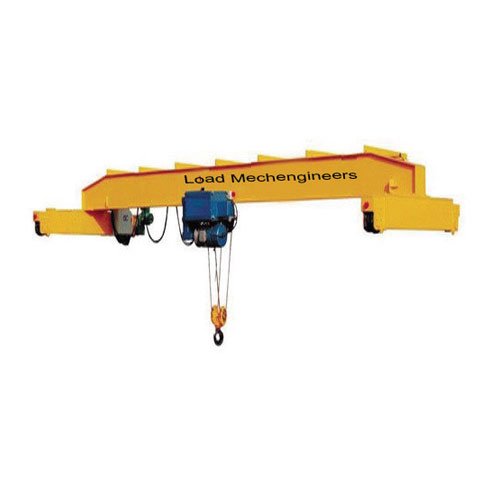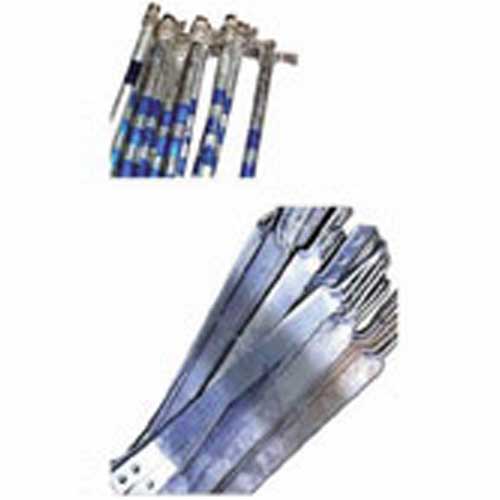Schedule a Call Back
Material handling equipment industry all set to grow
 Technical Articles
Technical Articles- Jul 01,17

With the global industry’s move towards adopting Industry 4.0 and the predicted growth in certain sectors like automotive, the material handling equipment sector will continue to post good returns.
If, as global industry soothsayers point out, industrialisation is set to post good growth over the coming years, there is every possibility that the material handling equipment industry will also take giant leaps ahead. According to a report published by Global Market Insights, the worldwide material handling equipment market size was over USD 110 billion in 2015 and growth is pegged at over 5 per cent CAGR estimation from 2016 to 2024. “Increasing penetration of advanced technologies, such as RFID, IoT, and voice picking, are expected to drive the material handling equipment market over the forecast timeframe. The evolution in the technology to assist smooth warehouse and logistics operations in meeting customer demand is rapidly changing the business environment,” the report states.
Growing automation capabilities in the manufacturing space will provide a fillip to the material handling equipment market size. Automation aids in reducing costs and delivering high-quality products. It eliminates the need for manpower to check-in, sort goods, or to move bins and totes containing materials. These automated systems scale up the operational needs and drive the business results by reducing errors, increasing pick rates, surging throughput and decreasing labour costs. For instance, automated guided vehicles (AGVs) are an automation solution for moving parts to and from the manufacturing facilities or conveying pallets for put-away in distribution centres. The logistics robotics market benefits from optimised work-flow procedures, high productivity levels and reduction of labour and operating costs.
The automated storage and retrieval systems (AS/RS) are anticipated to witness substantial growth. These systems integrate automated software and hardware for precise replenishment and picking. In addition, they frequently position and deliver the essential inventory to a conveyor structure, manual out-feed, or an ergonomic operator station. This leads to a decrease in floor space, labour, and inventory levels, resulting in rising productivity in contrast to manual storage approaches. Typical storage applications comprise tooling, order picking, consolidation, and buffering in cold, ambient, freezer, or clean-room environments. Robotics will further witness a significant adoption rate, as it aids in enhancing the productivity of the manufacturing facilities and improving customer satisfaction by delivering high-quality products in an appropriate manner. They perform multi-tasks, thereby, streamlining the whole process. Further, e-commerce applications are anticipated to witness attractive growth opportunities over the forecast timeline. This is due to the rising demand of efficient, responsive, and reliable material handling equipment market as the customers expect their orders accurately, quickly, and undamaged. The material handling processes aids in enabling supreme performance and high up-time for the peak season productivity. They help in moving more pallets per shift, and reduce product damage with careful handling, with lift truck and equipment rental options.
Amidst this optimistic global scenario, the India material handling equipment market share is anticipated to grow significantly from 2017 to 2024 due to an attractive economic landscape, and significant demand for goods movement. “The increase in manufacturing activities in the region will also augment sales. The need for safe working environments in industrial facilities, developments in areas such as wireless technologies, robotics, and flexible electronics will fuel the MEA material handling equipment market size. Furthermore, the expansion of various international firms in the region will drive demand,” the report predicts.
As per an industry press release, India is expecting a CAGR of 10 per cent up to 2020 in the material handling sector. “A recent study reveals that the Indian MHE industry is expected to grow steadily. The improvement in the Indian economy will result in accelerated demand for goods movement and create opportunities for suppliers of goods handling products and services of all types. With the government’s ambitious ‘Make in India’ plan taking root, the industry is expecting to see good growth in manufacturing and consequently in logistics and distribution activities for the next few years,” the release states.
The need for MHE is directly related to the amount of cargo and freight traffic. With a wide production capacity base, India is perhaps the only developing country which is totally self-reliant in such highly sophisticated equipment. The total warehousing space requirement in India expected to grow at a CAGR of 9 per cent from 919 million sq. feet in 2014 to 1,439 million sq. feet by 2019. Manufacturing will continue to remain one of the biggest demand drivers of the warehousing sector with an annual requirement of 61 million sq. feet of incremental space between 2014 and 2019. With the government’s renewed focus on incentivising the manufacturing sector, the logistics market will reap the benefits in the coming years. As per industry experts, investment in warehouse can provide an opportunity of realising returns in the range of 12 per cent – 20 per cent per annum. Interestingly, Chennai is emerging as a key market for material handling equipment with a spurt in the number of warehouses and container freight stations in and around the city. This will, in turn, boost the demand for MHE like forklifts, pallet trucks, stackers, order pickers and reach trucks.
As Tushar Mehendale, Managing Director, ElectroMech, puts it in the company’s newsletter, “After a faint glimmer of hope of recovery in the Indian industry, the reality on the ground is yet to change. While all indicators do point to a surge of growth in the overall economy, the exuberance is still not translating into hard-core business. However, as I have always maintained, exciting times are ahead for all of us.” The optimism stems from a report which states that the automated material handling (AMH) equipment market was valued at USD 26.02 billion in 2015 and is expected to reach USD 44.68 billion by 2022, growing at a CAGR of 7.9 per cent between 2016 and 2022. The base year considered for study is 2015 and the forecast period is between 2016 and 2022.
In fact, S A Mohan, CEO, Maini Materials Movement, recently stated in an interview with an industry magazine that the Indian warehousing and material handling sector is one of the most promising segments of India’s new economy. “Though nascent and not as technologically advanced as its western counterparts, the sector is creating a huge buzz globally by virtue of its sheer potential for growth,” he said. Maini Materials Movement, headquartered in Bengaluru, offers the entire gamut of in-plant material handling products. “The economic scene in India is replete with paradoxes and surprises. India has the potential to achieve growth rate of 8 per cent per annum. Despite the current global financial crisis, India remains one of the strongest growth economies and one of the most promising markets worldwide,” elaborated Mohan in terms of how this can impact the MHE industry.
The growth, industry experts say, will come from the automotive industry. India is the world’s second-largest two-wheeler market, Asia’s third-largest passenger vehicle market, the world’s fifth-largest bus and truck market (by volume) and the world’s fourth-largest commercial vehicle markets. As such, cost competitiveness, increasing demand, easy financing schemes, new product offerings, infrastructure development and an enabling regulatory environment would be the key growth factors for the Indian MHE industry that is slated to grow in tune with the automotive and certain other sectors.
Therefore, to keep up with the changing times, innovation is the order of the day. Last year, for example, Toyota Material Handling India (TMHIN) launched its three-wheeler electric forklift. Available in 1.0 T, 1.25 T, 1.5 T, 1.75 T and 2.0 T load capacity, the 8FBE-Series forklifts offer improved operating time, superior stability and durability. What also keep the MHE industry afloat are the customised solutions. For example, ElectroMech designed a single-failure-proof crane for the Spent Fuel Storage Bay at Nuclear Power Corporation of India’s Kakrapar atomic power plant. Spent fuel rods from the nuclear reactors are stored for 10-20 years in storage pools that are typically 40+ feet deep. These pools contain water, which acts as a shield to prevent radiation from entering the atmosphere as well as cools the fuel assemblies that continue to produce heat. ElectroMech provided the lower block of the crane with three hooks, positioned in such a way that the composite lifting assembly meets the requirement of single-failure-proof criteria.
An additional arena that offers scope for the MHE industry is that of prefabricated building. The concept of prefabricated buildings is nothing new. As far back as the 1800s, prefabricated homes and buildings were shipped to locations around the world. But in India, there is one company that is helping take the industry to the next level. The company behind this ambitious program is KEF Infra, a subsidiary of KEF Holdings, a multi-industry organisation with offices and businesses across Asia and the Middle East. Faizal Kottikollon, chairman of KEF Holdings, believes that new construction methods will play a vital role if India is to meet its ambitious targets for infrastructure development.
To assemble its prefabricated developments, KEF Infra has turned to Potain tower cranes to provide the necessary lifting speed and strength. The company has received three Potain MC 465 cranes while a further two MD 610 cranes are scheduled to arrive. The most notable feature of the cranes selected by KEF Infra is their high capacity, which stands out in a country where lower capacity units make up the vast majority of the crane population. The bigger-sized cranes are needed to handle the larger weights of the components in the prefabricated buildings and to accommodate the longer jibs needed to cover the large project areas. The MC 465 units have a maximum capacity of 25 T, and can lift 3 T at their maximum jib end of 80 metres. The MD 610 cranes also have a maximum capacity of 25 T, and can lift 4.6 T at their maximum jib end of 80 metres. One of the MC 465 cranes was put to work on the construction of the Yenepoya University in Mangalore. This was India’s first large prefabricated building and consists of three eight-storey apartment blocks for university staff. The project was designed, manufactured and assembled in just nine months, and the complex includes 96 apartments with each floor having 12 two-bedroom units.
There are some challenges though. One of the biggest problems faced by the material handling industry is related to the plethora of taxes and duties across various states in India. Introduction of GST will be a game-changer for this industry as it will enable the customers to consolidate and build warehouses and distribution centres where it makes economic sense rather than having them sub-optionally spread across various states. The other challenges faced by MHE manufacturers in India are the sharp practices followed by some global players who avoid payment of taxes in India by utilising methods such as high sea sale, etc. This method enables the seller to sell the equipment in India in rupees without paying VAT. At the same time, Indian manufacturers have to bear incidence of VAT on their sales, thus putting Indian manufacturers at a disadvantage vis-a-vis such imports. “State governments have to be vigilant to stop these kinds of practices and only allow genuine cases to happen,” an industry spokesperson suggests.
- HUNED CONTRACTOR
Related Stories

Hindalco partners with Ador Welding to enhance employees’ welding skills
Ador Welding Ltd and Hindalco School of Excellence have launched two key initiatives - the Training of Trainers (TOT) program and the Evaluation and Certification of Trainees in the welding trade.
Read more
Indore’s RR CAT plans AI-driven innovations in welding
RRCAT’s proposal, which aligns with the government's AI (artificial intelligence) vision in Amrit Kaal, has already secured approval at the Department of Atomic Energy (DAE) level.
Read more
SKF India dedicates a song to mechanics
SKF India - a manufacturer of bearings, seals, lubrication and lubrication systems – has released "Heroes of the Road”, a heartfelt song dedicated to the unsung heroes of the automotive industry..
Read moreRelated Products

Hydraulic Stackers
Rana Material Handling Equipments is a
manufacturer and supplier of hydraulic stackers.

Eot Cranes
Loadmech Engineers offers a wide range of single girder EOT
cranes.

Earthing Material
Saral Industries offers a wide range of earthing material.











